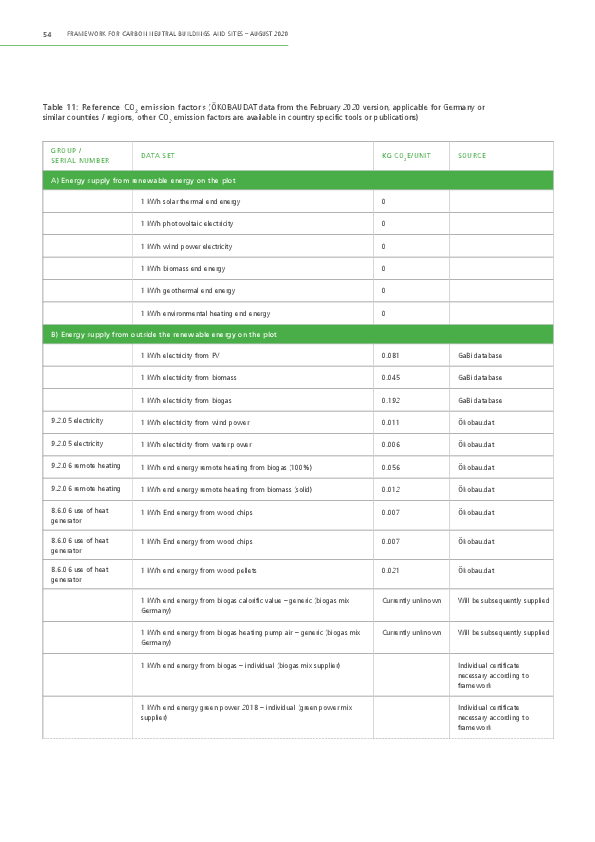In order to provide practical support to all stakeholders in the realisation of their climate action, the DGNB provides you with tools to calculate the carbon footprint as a status assessment of your building operations.

DGNB CO2 accounting tool
Instructions on how to use the CO2 calculator can be found here. A template for documenting your CO2 accounting is available in German.
In an info event on 10 April 2025, we provided a concise overview of the latest updates to the tool and demonstrated how to correctly enter individual measures using a fictitious example. You can find the recording (in German) here on the DGNB YouTube channel.
The DGNB Academy also regularly offers events that explain in a practical way how to easily and reliably account for the operation of a building. If you are interested, please contact us via e-mail at ausbildung@dgnb.de. Click here for the seminar offers.

Reference CO2 emission factors
These factors can also be found in the Framework for carbon neutral buildings and sites. You can find more information on this here.
Criteria for calculation tools to determine energy demand and greenhouse gas emissions
Software tools are important in order to be able to determine the effects of planned measures to reduce emissions. There is no specific tool defined for the determination of the energy demand and the greenhouse gas emissions of buildings or sites.
The criteria which play a role in the selection of the appropriate tool include:
- conformity with all accounting regulations in the Framework for calculating the ‘absolute annual greenhouse gas emissions’
- complete accounting scopes: Determining the energy demand with all existing energy supplies within the accounting parameter ‘site’
- realistic user profile: Individual depiction of operating time, user profile and occupancy intensity
- realistic weather data: Individual depiction of weather data on a monthly or daily basis according to the requirement, including in a minimal time interval
- realistic building technology: Possibility to depict the actual effect of supply and regulation systems
- realistic comfort evaluation: Evaluation of the thermal comfort taking different surface temperatures into consideration as well as the delaying effects of thermal mass on the indoor temperature
- validated software: The use of a calculation program with verifiable fulfilment of recognised quality standards
- individualisation: Option to use specific CO2 emission factors
These criteria are taken from the Framework for carbon neutral buildings and sites. Please find further information here.
back to the Toolbox "carbon neutral building"
